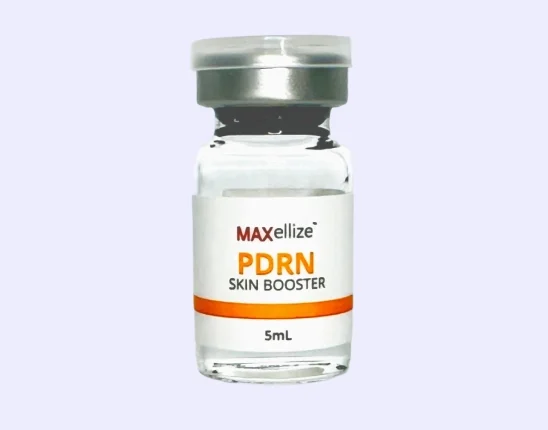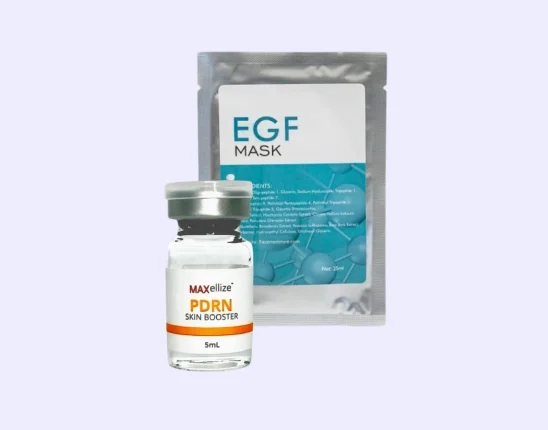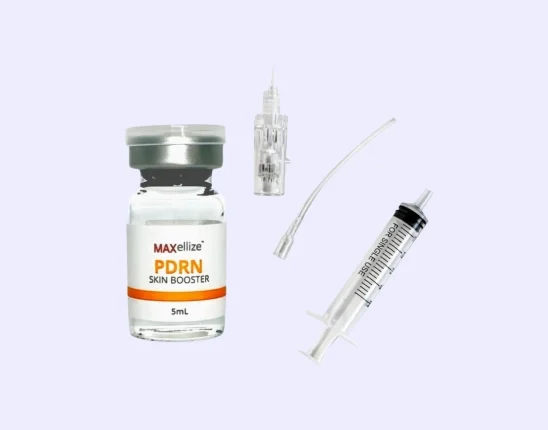Growth factors are molecules that are widely used in regenerative medicine due to their capacity to help regenerate tissues through cell proliferation. A positive correlation is often associated with more beneficial effects and high levels of growth factors; however, excessive things in the body may still lead to disease states.
So what do high serum levels of transforming growth factor beta-1 mean? Transforming growth factor beta-1 (TGF-β1) is a growth factor that regulates different bodily functions such as cell growth and immune responses. While TGF-β1 is generally highly beneficial, chronically elevated levels of TGF-β1 are linked with disease states such as hypertension, fibrosis, and cancer.
What’s Transforming Growth Factor Beta-1?
Transforming growth factor-beta is a subfamily of growth factors secreted in a temporal and tissue-specific manner due to them being controlled by several promoters. It’s present in a wide range of cell types such as fibroblasts, endothelial cells, epithelial cells, and smooth muscle cells. Major activities of this growth factor subfamily include:
- Both inhibitory and proliferative properties on cells (it’s inhibitory in most cells but proliferative in mesenchymal cells)
- Regulation of the immune response (for example, it exerts its activity on monocytes by acting as a chemoattractant and modulator of the inflammatory response)
- Formation of extracellular matrix
Transforming growth factor beta-1 (TGF-β1) is one of the three isoforms of the transforming growth factor-beta family, which all function at the same receptor signaling pathways. They’re differentiated from each other via the amino acid regions that are distinct for each isoform. Characteristics of each isoform are as follows:
- TGF-β1 – The most widely produced and present form, TGF-β1 may have a role in the growth and differentiation of components of the skeletal system such as cartilage and bones. It was first described in placental mRNA.
- TGF-β2 – TGF-β2 is present in neurons and astroglial cells of the nervous system of the embryo. It was first described in human glioblastoma cells and is alternatively called glioblastoma-derived T cell suppressor factor (G-TsF).
- TGF-β3 -Tgf-β3 plays a role in the development of the normal palate and lungs. It was first described in the cDNA library of the human rhabdomyosarcoma cell line. It’s also expressed in high levels in umbilical cord cells.
Activation Of Transforming Growth Factor Beta-1
TGF-β1 is stored in the extracellular matrix and is secreted in the latent form and thus requires activation upon secretion for it to fully exert its biological activity. This way of TGF-β1 production acts as a regulatory step to control the effects of TGF-β1.
The latent form of TGF-β1 has a structure that features a ring-shaped complex. It has a distinct folding in which the pro-domain is shielded away from the recognition of cell surface receptors.
Activation of TGF-β1 requires the removal of the RGD sequence through binding of αv integrin and exertion of force in the said domain. Other requirements for the activation of TGF-β1 include plasmin, thrombospondin, and acidic microenvironments.
Diseases Associated With High Serum Levels Of Transforming Growth Factor Beta-1
Correlation between TGFβ1 levels and diseases is established, with disease states indicated by high TGF-β1 blood levels including primary open-angle glaucoma, multiple sclerosis, adolescent chronic fatigue syndrome, hypertension, fibrosis, and cancer. They’re also indicative of the disease progression of HIV/AIDS.
1) Primary Open-Angle Glaucoma
Primary open-angle glaucoma (POAG) is characterized by the degeneration of the optic nerve coupled with open anterior chamber angles. In this disease entity, optic nerve degeneration is facilitated by TGF-β1 (due to high intraocular pressure that induces its expression) and TGF-β2 (the activity of which is facilitated by the connective tissue growth factor).
As evidence of the role of TGF-β1 and TGF-β2 to POAG, an increased amount of TGF-β2 is observed in the aqueous humor and reactive optic nerve astrocytes of patients with POAG.
2) Multiple Sclerosis
Multiple sclerosis is an autoimmune disease of the central nervous system, in which immune cells attack the nerve fibers and myelin sheath (the fatty, protective covering of nerves). High levels of TGF-β1 are present in the serum of patients with both relapsing-remitting (RR) and secondary chronic progressive (CP multiple sclerosis).
This is hypothesized to be indicative of the anti-inflammatory response of the body against the autoimmune attacks in multiple sclerosis, as TGF-β1 has immunomodulatory effects.
3) Adolescent Chronic Fatigue Syndrome
Adolescent chronic fatigue syndrome (CFS) is a chronic condition in adolescents characterized by musculoskeletal pain, headaches, and disproportional fatigue when doing activities. Its mechanisms are unknown and TGF-β levels aren’t different between diseased samples and healthy controls, although isoforms of TGF-β may be associated with fatigue score through neuroendocrine markers. TGF-β3 also mediates plasma cortisol and B cell gene expression.
4) Hypertension
Hypertension or high blood pressure is the consistently increased blood pressure in the blood vessel walls. An association between TGF-β1 and blood pressure levels, such that TGF-β1 production is induced by components of the renin-angiotensin-aldosterone system (RAAS), a process that affects blood pressure.
This association is further evidenced by the study, showing that increased levels of TGF-β1 are observed in subjects with hypertension compared to healthy controls. TGF-β1 also plays a role in the regulation of the production of corticosteroids, thus also affecting sodium and water homeostasis, which in turn affects blood pressure levels.
5) Chronic Kidney Disease
Chronic kidney disease (CKD) involves the gradual loss of kidney function. Inflammation and fibrosis are the hallmarks of CKD, which are mediated largely by TGF-β1 through its interaction with other signaling pathways and molecules. TGF-β1 has multifactorial effects on CKD, with protective effects on inflammation and exacerbating effects in fibrosis.
6) Progression Of HIV/AIDS
TGF-β1 exerts its effects in the adaptive and innate immune response. In this regard, it’s no surprise that HIV/AIDS, being a disease of the immune system, is associated with TGF-β1 as well. TGF-β1 levels increase in the blood due to HIV/AIDS progression.
HIV-1 proteins contribute to the production of this growth factor by inducing CD8+ T cells to secrete TGF-β1. In turn, regulatory T cells (Tregs) suppress the immune system of patients with HIV/AIDS by the overproduction of TGF-β1.
7) Allergic Disease
The inflammatory response is mediated by TGF-β1. It can promote the migration of immune cells such as macrophages, granulocytes, and other cells to the site where inflammation is occurring.
It can also recruit other inflammatory cytokines relevant to the immune response. It also has important anti-inflammatory and immunosuppressive properties. It can also direct the development and differentiation of Tregs.
8) Cancer
TGF-β1 levels are shown to be increased in malignant cancers such as breast cancer, hepatocellular carcinoma, leukemia, among others. This suggests that abnormalities in TGF-β1 expression can affect tumor invasiveness and can indicate poor prognosis in these individuals.
Sources of TGF-β1 in cancer may be from the tumor itself or the cells of the tumor stroma, to which the inflammatory cells infiltrate such as leukocytes, macrophages, and precursor cells from the bone marrow.
- Breast Cancer – Breast cancer is a disease state in which breast cancer cells proliferate (these are breast cells that grew abnormally and are out of control) and may migrate towards other organs. Progression of disease and therapy resistance of breast cancer occurs in association with TGF-β1.
- Colorectal Cancer – Colorectal cancer is a common cancer of the digestive system where there’s an abnormal proliferation of cells. The risk of the development of colon cancer and tumor metastasis occurs in association with TGF-β1.
- Gastric Cancer – Gastric cancer is the 2nd most common cancer in the world. It’s a cancer of the digestive system that originates from the gastric mucosal epithelium. High levels of TGF-β1 are shown to occur in patients with gastric cancer, indicating the association of TGF-β1 with the initiation, development, and metastasis of gastric cancer.
- Hepatocellular Carcinoma – Epithelial-mesenchymal transition, which is a critical step in this cancer of the liver, is induced by TGF-β1. This indicates the association of TGF-β1 and TGF-βR1 in the growth, metastasis, invasion, and prognosis of hepatocellular carcinoma.
- Lung Cancer – Lung cancer is a malignancy in the lungs, which have several types such as non-small cell lung cancer and small cell lung cancer, which are the dominant types that cause cancer-related deaths. TGF-β1 induces the transformation of lung cells from epithelial to mesenchymal cells. It may also induce the adhesion and metastasis of lung cancer cells.
- Leukemia – Leukemia is a malignancy of hematopoietic stem cells. Abnormal hematopoiesis in leukemia is a result of the activity of excessive TGF-β1, which upregulates early growth response 3 expressions.
9) Fibrosis (Tissue Repair)
TGF-β1 induces epithelial-mesenchymal transition necessary for the transformation of epithelial cells into fibroblasts and myofibroblasts. It also induces the expression of target genes whose activity results in the chemoattraction, proliferation, and differentiation of fibroblast into myofibroblast for ECM production and contraction.
10) Keloid And Hypertrophic Scar
TGF-β1 is established to be a growth factor that promotes wound healing by directly affecting the different phases of the wound healing process. It affects the migration of monocytes in the inflammatory phase, promotes angiogenesis (production of new blood vessels) in the proliferative phase, and helps promote remodeling by aiding in the layout of the extracellular matrix.
Overproduction of TGF-β1 then is hypothesized to be implicated in over-healing and, as a result, the appearance of keloid and hypertrophic scar.
Clinical Significance
Due to the role of TGF-β1 in tumor progression and being a poor prognostic marker, inhibitors of this growth factor are being subjected to studies and clinical trials as possible anticancer treatments. Some examples include inhibitors of TGF-β1/TGF-βR1 (LY2382770) and TGF-βR1/ALK5 (LY2157299, TEW-7197, TEW-7197, and LY3200882).
- LY2382770 – This drug is under clinical phase II and may be used against diabetic kidney disease, diabetic nephropathy, and diabetic glomerulosclerosis.
- LY2157299 (galunisertib) – This drug is under clinical phase II/III and may be used against pancreatic carcinoma, glioblastoma, hepatocellular carcinoma, and myelodysplastic syndrome.
- TEW-7197 – This drug is under clinical phase II for myelodysplastic syndrome and clinical phase I for solid tumor.
- LY3200882 – This drug is under clinical phase I and may be used against solid tumor.
Anti-TGF-β therapy is also indicated for use as a therapeutic strategy against CKD, with the inhibition of TGF-β1 showing promising results in decreasing fibrosis. However, due to the multifunctional role of TGF-β1 to CKD, it’s more suggested to utilize a targeted treatment of TGF-β signaling molecules rather than generally blocking its effects.
PEP Factor: The Best Formulation Containing Growth Factors And Other Natural Ingredients
Elevated plasma TGF-β1 levels are associated with disease severity and progression, such as the association of growth factor-β1 levels with cancer development and progression of HIV/AIDS. However, note that TGF-β1 is a growth factor that regulates immune responses and cell cycle progression of many cell types, and, in optimal levels, is beneficial to the human body.
FACE Med Store’s PEP Factor is a non-tumorigenic, ready-made formulation that may also be a source of exogenous growth factors through its basic fibroblast growth factor (bFGF) content, which is also known to modulate the growth and proliferation of cells. It also contains copper peptide which acts as an antioxidant. It also contains natural ingredients such as amino acids and other nourishing products.
Its scalp rejuvenating formulation may help improve the appearance of thinning hair while its skin rejuvenating formulation may help brighten the skin. Because it’s topically applied, FACE Med Store’s PEP Factor also has only minimal side effects such as redness in the areas where it’s applied. It also can be safely added to other treatment modalities such as microneedling for optimal benefits.
Shop For The Best Beauty and Medical Products At FACE Med Store
Elevated blood levels of TGF-β1 are associated with human diseases such as the development of hypertension, fibrosis, and cancer and also the progression of HIV/AIDS. Because of this linear correlation, TGF-β isoforms and TGFβ receptors are being studied as targets in the management of diseases, most notably cancer.
At FACE Med Store, we stock up on high-quality medical products such as PEP Factor and derma rollers for microneedling. We strive to make sure our products are high-quality and get highly-trained staff to address all your beauty and medical supplies concerns. . Contact us now at (800)770-9083 and shop now for the best beauty and medical products.
Learn More: What Does Human Transforming Growth Factor Beta 1 Test?















